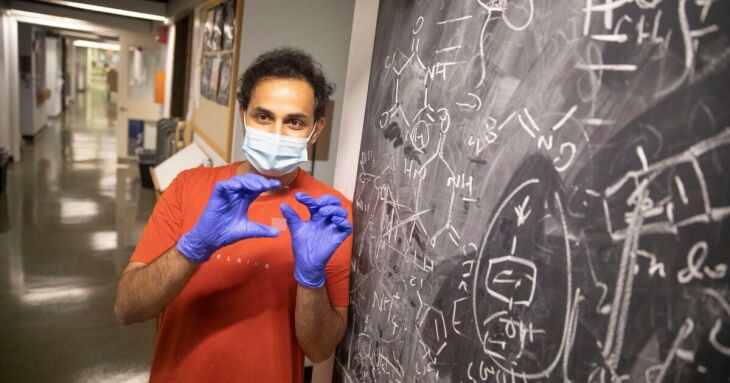In the digital age, every byte of data needs to go somewhere — and preferably stay there a long time. That last part is a major problem when it comes to data-storage systems, which typically last less than 20 years. A group of Harvard chemists is trying to solve the issue with an innovation that resembles tiny drops of ink.
In a new paper in ACS Central Science, researchers from the George Whitesides lab describe a novel storage approach that uses mixtures of seven commercially available fluorescent dyes to save data files. The dyes are dropped by an inkjet printer and read with a microscope that can detect the different wavelengths of light each dye emits. The researchers then decode the binary message in the molecules back to documents, books, photos, videos, or anything else that can be digitally stored.
Theoretically, the data can be saved for a very long time — thousands of years or more. The long timeline of molecular data-storage options is superior to that of current media devices for data storage, such as flash drives, Blu-rays, magnetic memory strips, and computer drives, which can store information for 40 years at most, have strict size limits, and are susceptible to water damage and hacking. Another shortcoming with traditional storage processes is that they gobble up energy. Even the cloud has a storage limit, requires huge and expensive physical servers, and is, of course, susceptible to being breached.
“This method could provide access to archival data storage at a low cost,” said Amit A. Nagarkar, co-lead author of the paper, who conducted the research as a postdoctoral fellow in the Whitesides lab. “[It] provides access to long-term data storage using existing commercial technologies — inkjet printing and fluorescence microscopy.”
The dye method could be particularly helpful with information whose storage is regulated — financial and legal records, for example — and in cases in which long-term storage is crucial, as with satellite data. The dyes live outside the hackable internet, are relatively cheap to produce, and can’t be read without a special microscope. The technique uses no energy once the data is recorded.















